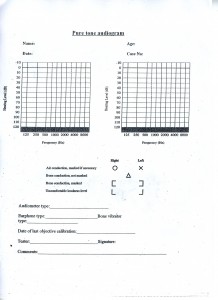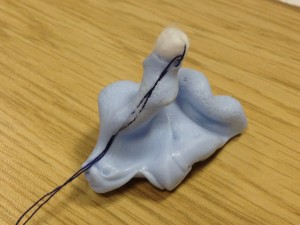
A hearing test (audiometry) measures the quietest sound and individual can hear, at least 50% of the time – known as hearing threshold level (HTL). An individual’s HTL at different frequencies is recorded in an audiogram for each ear, and this information can be used to categorise hearing as within normal range, or a hearing loss that can range from mild to profound. Otoscopy and tympanometry is used alongside audiometry to identify any abnormalities of the middle ear that may be affecting the hearing, e.g. perforation or glue ear.
In hospitals and hearing aid dispensing practices, audiometry and tympanometry is typically carried out by audiologists who are trained to undertake these procedures during their university course. In the UK, audiometry is carried out according the British Society of Audiology Recommended Procedure.
However, basic hearing tests and tympanometry can also be performed by GPs, occupational health nurses, audiometricians, assistant technical officers, teachers of the deaf and hearing aid assistants. The British Society of Audiology has a Practice Guidance Document for “Hearing assessment in general practice, schools and health clinics: guidelines for professionals who are not qualified audiologists”.
A British Society of Audiology accredited course in basic audiometry and tympanometry trains non-audiologists to undertake hearing tests in the field and interpret the results, according to minimum training criteria.

